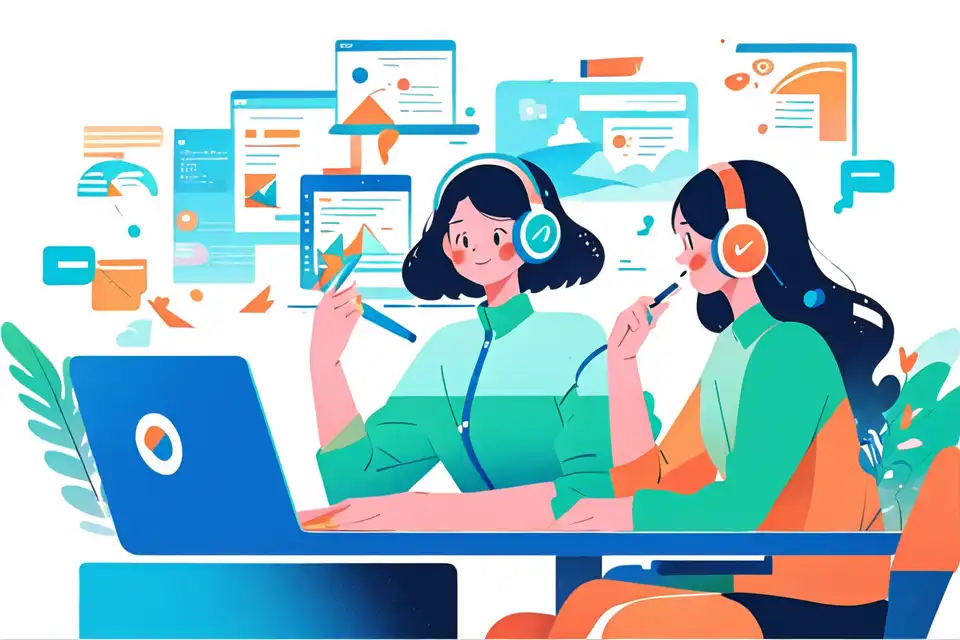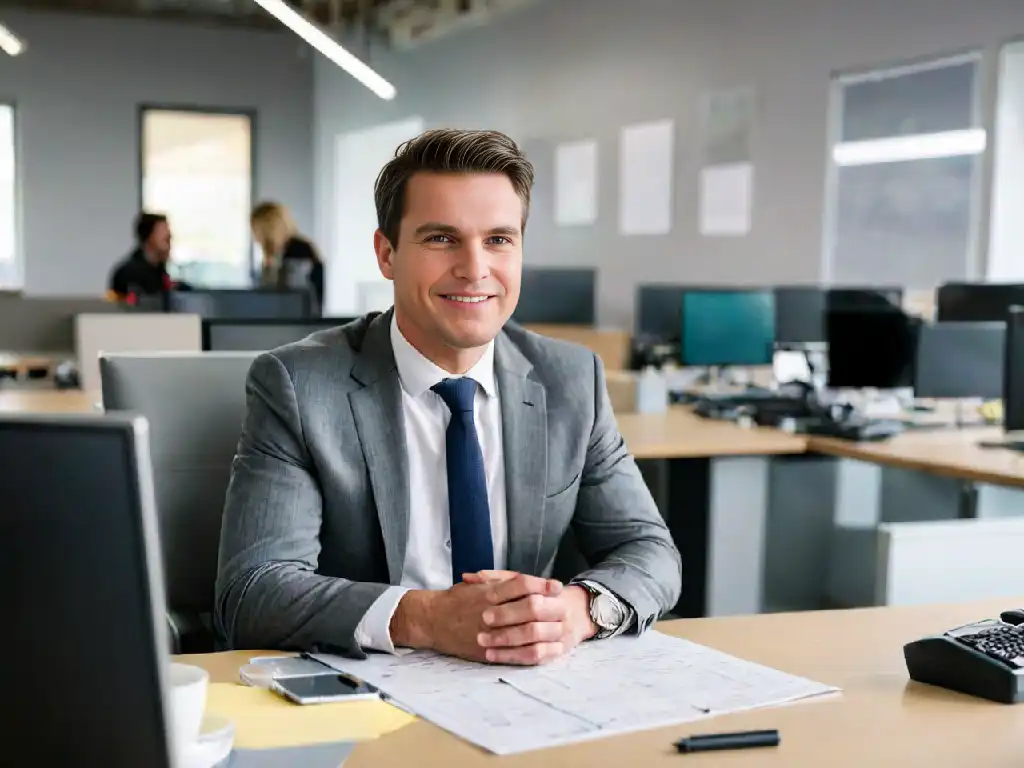Interview Questions for Design Professionals (with Top Questions and Answers)
Mastering the Art of Job Interviews for interview questions for design professionals: Job Interview Examples and Insights
Try Lark for Free
In today's competitive job market, excelling in interviews for design professionals requires a deep understanding of the role's nuances and the ability to articulate how your unique skills and experiences align with the needs of the employer. This article aims to provide a comprehensive guide for aspiring design professionals, offering valuable insights into the expectations of hiring managers, effective interview preparation strategies, key interview questions for design roles, and essential do's and don'ts to stand out during the interview process.
Understanding the role of design professionals
The role of design professionals has evolved significantly in the modern workplace, transcending beyond mere aesthetics to encompass strategic problem-solving, user-centric design thinking, and seamless integration of digital experiences. They are not only visual storytellers but also collaborative visionaries, consistently pushing the boundaries of innovation and creativity.
Key Skills and Competencies Required
- Proficiency in industry-standard design software such as Adobe Creative Suite, Sketch, or Figma
- Strong understanding of design principles, typography, and color theory
- Ability to effectively communicate and present design concepts to cross-functional teams and stakeholders
- Experience in conducting user research, usability testing, and incorporating user feedback into design iterations
- Flexibility to adapt to evolving design trends and technologies
Use Lark for video interviews and candidate tracking.
Elevating your candidacy: strategies for interview preparation
Step 1: Researching the Company and Industry
Before attending an interview, it is crucial to gain a comprehensive understanding of the company's culture, values, recent projects, and their position within the industry. This knowledge will enable you to tailor your responses, showcasing how your expertise can contribute to their specific needs and goals.
Step 2: Polishing Your Portfolio and Projects
A robust portfolio that represents a diverse range of design projects can significantly enhance your candidacy. Each piece should demonstrate your design process, problem-solving abilities, and the impact of your work. Ensure your projects showcase your versatility, creativity, and capacity to address unique design challenges.
Step 3: Mastering the Behavioral and Technical Questions
In preparing for a design professional role, anticipate a mix of behavioral and technical questions. Practice articulating your design thinking process, problem-solving methodology, and how you've collaborated within a team to achieve successful design outcomes. Additionally, be prepared to demonstrate your technical proficiency and discuss any innovative design solutions you've implemented in the past.
Unveiling the top 5 interview questions for design professionals
Question 1: "Describe a project where you had to work under a tight deadline. How did you manage your time and resources effectively?"
Importance of this Question This question assesses your ability to thrive under pressure and deliver high-quality work within constrained timelines, a critical skill for design professionals working in fast-paced environments.
Key Factors Considered in Your Response
- Time management techniques and prioritization of tasks
- Resource allocation and utilization to meet project deadlines
- Balancing efficiency without compromising design quality
Sample Answer Illustration "In a previous role, I encountered a scenario where our team was tasked with creating a comprehensive branding package for a high-profile event with a significantly shortened timeframe. To effectively manage the project, we meticulously outlined project milestones, allocated tasks based on individual strengths, and maintained open lines of communication to address any obstacles promptly. Our collective efforts, coupled with strategic time management and resource allocation, allowed us to deliver a cohesive and impactful branding solution well within the deadline."
Question 2: "Can you walk us through your creative process when faced with complex design challenges?"
Importance of this Question This question evaluates your creative problem-solving skills and your approach to tackling intricate design issues, emphasizing how you derive inspiration and execute innovative design solutions.
Key Factors Considered in Your Response
- Insight into your design process, from ideation to final execution
- Adaptable problem-solving methods and techniques
- Ability to incorporate user feedback and iterate on designs
Sample Answer Illustration "When encountering complex design challenges, I embrace a systematic approach that begins with in-depth research and analysis to understand the problem fundamentally. As I delve into the ideation phase, I seek inspiration from varied sources to fuel my creativity and ensure that the design resonates with the intended audience and aligns with the brand's ethos. Additionally, I frequently engage in feedback loops with team members and end-users, allowing me to refine and iteratively improve the designs until an optimal solution is achieved."
Question 3: "How do you ensure that your designs align with the brand's identity and messaging?"
Importance of this Question This question assesses your understanding of brand alignment and your ability to create designs that seamlessly integrate with a brand's visual language and messaging.
Key Factors Considered in Your Response
- Familiarity with the brand's identity and values
- Consistency in translating brand elements into design
- Strategic inclusion of messaging within the design language
Sample Answer Illustration "When working on design projects, my approach revolves around nurturing a deep understanding of the brand's identity, culture, and target audience. By aligning with the brand's core values and visual guidelines, I ensure that every design component echoes the brand's essence. By incorporating relevant messaging and visual cues, I create designs that not only resonate with the brand but also effectively communicate its narrative to the audience."
Question 4: "Provide an example of a design project that received constructive feedback. How did you incorporate the feedback into the final product?"
Importance of this Question This question evaluates your ability to receive and act upon constructive criticism, showcasing adaptability, receptiveness, and a commitment to continuous improvement in your design work.
Key Factors Considered in Your Response
- Receptivity to feedback and openness to critique
- Implementation of feedback constructively and iteratively
- Demonstrating adaptability and flexibility in design approach
Sample Answer Illustration "In a recent design project, I received constructive feedback centered on the usability and accessibility of the interface I had developed. I approached the feedback with an open mindset, utilizing it as a catalyst for improvement rather than a setback. This involved re-evaluating the design principles, conducting user-centered research, and collaborating with the development team to implement functional enhancements that ultimately resulted in an intuitive and user-friendly interface."
Question 5: "In your opinion, what are the most important skills for a design professional to possess, and how do you continue to improve them?"
Importance of this Question This question delves into your understanding of the industry's core competencies, your commitment to ongoing skill development, and the methods you employ to stay abreast of evolving design practices.
Key Factors Considered in Your Response
- Identifying key skills essential for design professionals
- Methods for self-improvement and continued learning
- Embracing versatility and adaptability in skill development
Sample Answer Illustration "In my view, adaptability, creativity, and effective communication are paramount skills for any design professional. Continual improvement stems from an innate curiosity and openness to new ideas, trends, and technologies within the design realm. I actively engage in professional development through workshops, online courses, and networking opportunities, allowing me to integrate new skills and methodologies into my design practice, thus ensuring that I remain proactive and adaptable amidst industry shifts."
Learn more about Lark x Employment
Navigating the interview room: do's and don'ts for design professionals
Do's
- Emphasize Collaboration and Communication Skills: Highlight your ability to work harmoniously within teams, communicate complex design concepts effectively, and engage in productive collaboration to achieve collective goals.
- Showcase Flexibility and Adaptability: Illustrate instances where you've embraced change, adapted to new design trends or technologies, and seamlessly transitioned into diverse design projects.
- Illustrate Experience with Diverse Design Tools and Platforms: Articulate your proficiency with a range of design software, platforms, and emerging technologies, demonstrating your readiness to embrace varied design requirements.
Don'ts
- Avoid Undermining Previous Employers or Colleagues: Refrain from expressing negative sentiments about past employers or colleagues, as it may reflect poorly on your ability to navigate professional relationships and showcase constructive communication.
- Steer Clear of Overpromising Unattainable Results: While it is essential to convey your strengths and aspirations, refrain from overpromising outcomes that are beyond realistic possibilities, as this may raise concerns about your professional integrity.
- Refrain from Displaying Inflexibility in Design Approaches: Demonstrate flexibility and openness to alternative design perspectives, avoiding a rigid stance that may hinder productive collaboration and compromise innovative design solutions.
Use Lark for video interviews and candidate tracking.








